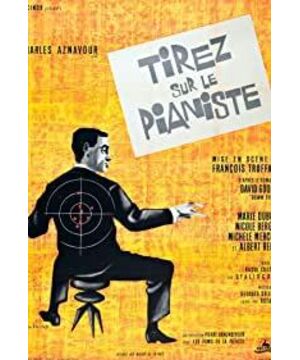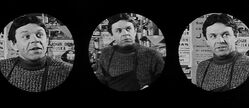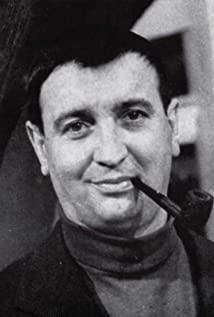western modernist literature
It is part of the capitalist culture of the 20th century. This kind of literature does not advocate using works to reproduce life, but advocates starting from people's psychological feelings and expressing the suppression and distortion of life on people. It mainly uses symbolism, absurdity and stream of consciousness to express the crisis consciousness of alienated people in the absurd world; in modernist literary works, characters are often deformed, stories are often absurd, and themes are often hopeless.
Austrian writer Franz Kafka, French writer Marcel Proust and Irish writer James Joyce are also known as the pioneers and masters of Western modernist literature.
1 Symbolist Literature
It originated in France in the mid-19th century and expanded to Europe and the United States in the early 20th century. Western mainstream academic circles believe that the birth of symbolism literature is a watershed between classical literature and modern literature. Symbolism, which took its official name in France in the mid-1880s, was a backlash against the positivist philosophy represented by Comte and the naturalistic literature represented by Zola. In the view of symbolists, positivism only knows the causal relationship between actual things mechanically, while naturalism focuses on the influence of heredity and environment on the formation of human nature, neither of which can reveal the essence of art.
Symbolists advocated to explore the hidden world of ideas behind the natural world, and to create supernatural art with personal sensitivity and imagination. The ideas of Nietzsche, Freud and Bergson can be seen as the philosophical basis of Symbolism.
2 Expressionism
An important modernist genre popular in European and American literature from the beginning of the 20th century to the 1930s before and after the First World War. Originating in Germany, it first started with painting and then spread to literature. Expressionism is that artists focus on expressing their inner emotions through their works, while ignoring the imitation of the description of the object form, so it is often expressed as a distortion and abstraction of reality. This approach is especially used to express fearful emotions - there are very few cheerful expressionist works. See
https://baike.baidu.com/item/%E8%A1%A8%E7%8E%B0%E4%B8%BB%E4%B9%89/1229565?ivk_sa=1022817p
3 Stream-of-consciousness novels emerged in the West in the early 20th century (1920s), mainly novels that express the flow of people's consciousness and show the trance and blurred spiritual world. It is believed that literature should express the flow of consciousness of characters, especially the activities of subconsciousness, and the flow of consciousness of people follows "psychological time" rather than physical time. It is mainly characterized by the creative methods of stream of consciousness, such as symbolic suggestion, inner monologue, and free association. In the 1920s and 1930s, Britain, the United States, France and other countries formed a rather spectacular modernist literary school.
Joyce in Ireland: "Dubliners", "Portrait of a Young Artist", "Ulysses" Wolff in England: "Spots on the Wall", "To the Lighthouse" Proust in France: " Faulkner in America: The Sound and the Fury
Detailed Explanation 1. Inner monologue: Stream of consciousness novels directly show what they think and feel, show the original ecology of psychology, without being organized and logical, writers withdraw from novels, less subjective intervention, and focus on expressing the conscious activities of the characters themselves. 2. Using the method of free association, stay on an object for a while, any external stimulus can interrupt the previous thinking process and start new thoughts. 3. The subjectivity and randomness are strong, often breaking the limitation of time and space, and the jump is large, and the process is organized from the psychological structure, while the traditional novels mostly unfold the plot in the passage of time and space. 4. In terms of content and subject matter, traditional novels are often omniscient and omnipotent, while in stream-of-consciousness novels, the status of writers declines, and the participation of readers is strengthened.
4 Surrealism emerged in France in the 1920s. It was developed from Dadaism and had a profound influence on visual arts. It flourished in European literature and art from 1920 to 1930.
Its main feature is that the so-called "super-real" and "super-intellectual" dreams and hallucinations are used as the source of artistic creation, and it is believed that only this "unconscious" world that transcends reality can get rid of all shackles and display objective facts most truly true face. Surrealism had a huge influence on the traditional view of art. Also often referred to as the Surrealist movement. Or simply surreal.
Surrealism (surrealism), the theoretical basis for exploring this faction is influenced by Freud's psychoanalysis, dedicated to discovering the human subconscious mind. Therefore, it advocates abandoning the realistic image based on logical and orderly experience and memory, and instead presents the image world in the deep psychology of human beings, trying to integrate realistic concepts with instinct, subconsciousness and dream experience.
5 Existentialism
It originated in France in the 1930s and reached its peak of development after World War II. French existentialism is basically divided into two groups: one is Christian existentialism represented by Simone Weil and Gabriel Marcel; the other is Jean-Paul Sartre, Albert Camus, German Atheistic existentialism represented by Boval.
In terms of the social influence of literature, Sartre (1905-1980) and Camus (1913-1960) are the most important, both of them are French writers. Especially Sartre. 1. French Camus: "The Outsider" (1942), "The Plague" (1947, Dr. Rieux) 2. French Sartre: "Disgusting" (novel), "Freedom Road" (novel), "The Wall" (short story) Novels), Dead Without a Burial (drama), The Flies (drama), Confinement (drama, showing that "others are hell"), The Respectful Whore (drama), Being and Nothingness "(philosophical works), "Existentialism is a kind of humanism" (philosophical works) 3. Beauvoir, France: "The Woman Guest", "Second Sex" 4. Mailer: "An American Dream"
6 Absurdist drama
It is an anti-traditional drama genre that emerged in France in the 1950s and quickly became popular in other countries in Europe and America. In 1962, it got its name from The Drama of the Absurd, written by the famous British drama theorist Martin Esslin.
Features: Absurd and abstract themes, the world is absurd, and life is meaningless; fragmented stage images; peculiar and bizarre props function, which makes the intuitive artistic characteristics of drama play to the limit. In terms of content, it expresses the unreasonableness of the world and the absurdity of life; in terms of artistic techniques, it breaks the traditional dramatic structure, using illogical plots, broken characters, mechanically repeated dramatic movements, and unreasonable forewords. Dry language to bring out the fundamental theme of the absurdity of the world in general. It has no complete plot, no dramatic conflict, fragmented stage imagery, and upside-down character language. The world it represents is absurd, life is painful, and the relationship between people is incommunicable. French Ionesco is the founder of the absurdist drama, and the performance of his one-act play "The Bald Singer" marks the birth of the absurdist drama.
7 New Fiction School
Formed in France in the 1950s, it became one of the most important fiction genres in France and the West after World War II. Also known as anti-fiction or rejectionists.
8 "Black Humor"
A genre of modernist fiction that was popular in the United States in the 1960s. A literary method of expressing the content of tragedy in the form of comedy. Black refers to the horrific and comical objective reality, and "humor" refers to the sardonic attitude towards this reality taken by a purposeful and willful personality. Humor with black added to it becomes a sense of despair. Western critics call it "humour under the gallows". !
Artistic features: a kind of humour that can't be laughed or laughed, a mixture of tragic content and comedy form, which expresses the absurdity of the world, the alienation of society from people, the confusion after the rational principle is broken, and the futility of self-struggling. In the face of all this, people let out cynical laughter and distanced themselves from reality with a humorous attitude towards life, in order to maintain the dignity of the devastated people, the so-called "black humor". "Anti-hero" characters: The spiritual world of the characters often tends to be divided, and they become "anti-heroes" with double tragicomedy colors. They use their ridiculous words and deeds to insinuate the social reality and express the author's views on social issues. The narrative structure method of "anti-fiction": expressing complicated and confusing plots through hints, contrasts, contrasts, and symbols. Breaking the rationalized time sequence, accelerating the rhythm and jumping, the plot lacks logical connection, often mixing narration of real life with fantasy memories, and mixing serious philosophy with gag. The brushwork is ironic, and the language often breaks with general grammatical rules and inherent word-matching habits. Allegorical.
Heller, USA: Catch 22
9 Magical Realism
A genre in Latin American fiction writing in the mid-20th century. It originated in the 1930s and 1940s and became the mainstream of Latin American novels after the 1960s. Its rise has been called "the explosion of Latin American literature".
Representatives include Asturias in Guatemala, Carpentier in Cuba, Rolfe in Mexico and Marquez in Colombia.
Magic realism is a creative method that expresses the reality of life through the illusion produced by "magic". Magic is the way, and expressing the reality of life is the goal. The reality is hidden by magical things, and what is shown to the reader is a cyclical world where subjective time and objective time are mixed, and the space of subjective and objective things loses its boundaries. In art, a large number of supernatural factors are introduced into the depiction of reality. Miracles, hallucinations, dreams and even ghosts appear in the plot of the novel. The chronological relationship is often disrupted, and the narrative is full of jumps. Sometimes the scenes are symbolic, showing a distinct Hell and national characteristics. It can be called a successful example of the combination of "transplantation" and "root-seeking". It is not only a deep excavation of reality, but also a serious reflection on history; it is not only a search for the origin of the traditional culture of the mainland, but also an extensive absorption of European and American modernism.
10 Futurism
A literary trend and school in the modern West that emerged in Italy in the early 20th century. He believes that the rapid development of the 20th century has fundamentally changed the world. Machines and technology, speed and competition have become the main features of the era. Futurism should have a modern feel, praise the progressive movement and machine civilization, and praise the beauty and power of speed. He believes that the previous culture has been corrupted and cannot adapt to the current era, and proposes to abandon all cultural heritage, and is dissatisfied with the existing order. On the theme of literature and art: mobilize all artistic means, concentrate on expressing objects and people in motion, and praise the sense of movement, force and three-dimensional style through dynamics. Art form: Futurists advocate a complete abandonment of traditional methods. 1. Russian Mayakovsky's long poem: "Clouds Wearing Pants" 2. French Apollinaire: The first "staircase" poetic form.
11 Dadaism
Modern Western literary genres. Produced in Switzerland during the First World War, he adopted an extremely rebellious attitude towards cultural traditions, real life, and artistic laws, which reflected the distressed psychology and the state of finding a way out of the young generation in Europe during the First World War.
12 The Beat Generation is a literary genre that became popular in the United States after World War II. Most of the writers are young men and women. They are rough and bold in character. Luo Tuo has a reputation for being unruly. They use homosexuality, jazz, drugs and alcohol to escape reality and challenge the decent society and traditional American values, and come to the conclusion that "sinking is liberation" and indulging in indulgence. To express dissatisfaction with respectable society and to carry out pathological resistance to society.
View more about Shoot the Piano Player reviews











